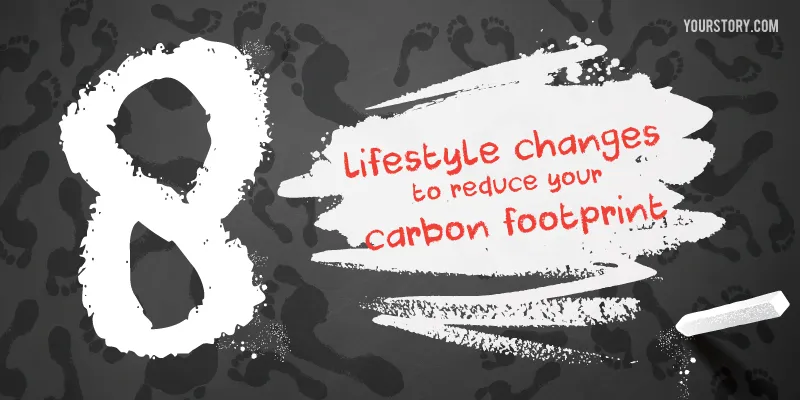8 powerful yet simple lifestyle changes to reduce India’s carbon footprint
India is the world’s third-largest carbon emitter, just behind China and the US. While China’s decarbonisation rate currently stands at 6 per cent, PricewaterhouseCoopers’ (PwC) report titled, ‘Low Carbon Economy Index 2015’ indicates that India’s carbon emissions due to electricity generation rose 8.2 per cent in 2014.
India has to make rapid strides to meaningfully contribute towards limiting global warming. Last year, at the Paris Climate Conference, India filed its climate action plan, wherein it said it would reduce its carbon emissions by 33 – 35 per cent from 2005 levels, as well as have mechanisms in place, which will assure that 40 per cent of the country’s electricity would come only from renewable sources, such as wind and solar; all by 2030.
But, Vivek Gilani, founder of Mumbai-based no2co2, asserts that the responsibility lies with citizens as much as with the government. He says, “There is an excess amount of raking from natural resources without allowing for replenishment. The issue can be holistically addressed only by addressing the root cause – the individual level of consumption.”
He further says,
The corporate consumer culture is deeply contributing to the excessive individual carbon footprint. This isn’t unethical behaviour, but mere overconsumption, which can be altered. If we are creating a problem, we have also created a reservoir of solutions.
Here are eight simple, yet powerful, changes citizens can make to help mitigate India’s carbon footprint –

- Switch to having a bucket bath – By eliminating the use of showers and switching to a bucket bath, one can save 30 litres per bath and if we were to calculate that for a building of 30 flats, it would be 13 lakh litres on an annual basis, which is equivalent to planting 10 trees.
- Set AC from 24 – 26ºC with a fan – This would help save 12 per cent on AC power and approximately Rs 2, 500 for an AC that has been used for eight hours/day for six months. If followed by a building of 30 houses, this is equivalent to planting 45 trees.
- Set geyser thermostat settings to 500c – By doing this consciously, 29 per cent of geyser power is saved, which is equivalent to savings worth Rs 1, 83, 000 per year for a building of 30 houses, or planting 102 trees!
- Install motion sensors for staircase lights – Installing 20 tubelights in a building controlled by motion sensors will help save close to Rs 21, 000 each year or equate to planting 12 trees per year per building.
- Compost your home waste – Using a home-composting system in earthen pots can avoid a building’s meaningless contribution of 22 tonnes of waste, which would end up in a landfill. This is equivalent to planting 29 trees per building per year.
- Reduce meat intake – By avoiding three meat-based meals in a week, an individual is helping what is equal to planting one tree per year.
- Reduce flying short-distances – Avoiding four domestic flights and taking an AC train instead for shorter distances is equivalent to planting two trees per person per year.
- Walk – As a family of four, if you walk 1.5 trips, twice a week, it is equal to planting four trees per year.
Vivek Gilani’s no2co2 is a non-profit that hosts three free and user-friendly resources, which offer a wealth of information to individuals interested in reducing their carbon footprint. The ‘Individual Carbon Footprint Calculator’ allow individuals to calculate their c-footprint across a host of parameters such as food and water consumption; electricity; domestic and national travel. Post this, individuals can access the ‘Minimise Energy Calculator’ through which they can explore ways to reduce their c-footprint. Finally, the ‘Sustainable Alternatives Directory’ lists city-wise ‘minimise resource’ providers, who can aid with services such as car-pooling, and installing home-composting systems.
As Vivek rightly says on his website,
If we do act, we will set an example for other people. If enough other people act, each one influencing yet another in a chain reaction of behavioural change, markets for all manner of green products and alternative technologies will prosper and expand.
Website – no2co2







